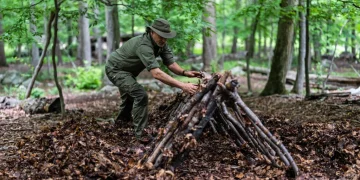Thriving on Nature’s Bounty: Essential Edible Survival Plants for Sustenance and Survival
In times of crisis or emergency situations, having the knowledge and skills to identify and consume edible plants can be crucial for survival. Nature provides us with an abundance of resources that can sustain us when traditional food sources are scarce. In this article, we will explore some essential edible survival plants that can provide sustenance and help you thrive in challenging environments.
Why Edible Survival Plants are Important
When faced with a survival situation, access to food is one of the most critical factors for survival. Edible survival plants offer a natural and readily available source of nutrition that can help you stay energized and healthy. By learning to identify and consume these plants, you can increase your chances of survival in the wild.
Common Edible Survival Plants
1.
Dandelion
Dandelions are commonly found in lawns, fields, and meadows. The entire plant is edible, including the leaves, flowers, and roots. Dandelion leaves can be eaten raw in salads or cooked like spinach. The flowers can be used to make dandelion wine, and the roots can be roasted and ground to make a coffee substitute.
2.
Wild Garlic
Wild garlic, also known as ramps, is a pungent plant that grows in wooded areas. The leaves of wild garlic can be used in salads, soups, and pesto. The bulbs can be pickled or used as a substitute for garlic in cooking.
3.
Nettles
Despite their stinging hairs, nettles are a nutritious and versatile plant that can be found in many regions. Nettle leaves can be cooked like spinach or used to make tea. They are rich in vitamins and minerals, making them an excellent survival food.
4.
Burdock
Burdock is a plant with large, heart-shaped leaves and purple flowers. The roots of burdock can be eaten raw or cooked and have a mild, earthy flavor. They are high in fiber and nutrients, making them a valuable survival food.
How to Identify Edible Survival Plants
When foraging for edible plants, it is crucial to correctly identify them to avoid consuming toxic plants. Here are some tips for identifying edible survival plants:
– Consult a field guide or knowledgeable expert to help you identify plants.
– Look for distinctive features such as leaf shape, color, and texture.
– Avoid plants with milky sap, thorns, or a bitter taste.
– Perform a skin test by rubbing a small amount of the plant on your skin to check for any adverse reactions.
Preparing Edible Survival Plants
Once you have identified edible plants, it is essential to prepare them properly to maximize their nutritional value and taste. Here are some tips for preparing edible survival plants:
– Wash plants thoroughly to remove dirt and debris.
– Cook plants to break down tough fibers and improve digestibility.
– Experiment with different cooking methods such as boiling, steaming, or sautéing.
– Combine edible plants with other ingredients to create flavorful and nutritious meals.
Conclusion
In summary, edible survival plants are a valuable resource for sustaining yourself in challenging environments. By learning to identify and consume these plants, you can increase your chances of survival in the wild. Remember to always exercise caution when foraging for wild plants and consult a knowledgeable expert if you are unsure about a plant’s edibility. With the right knowledge and skills, you can thrive on nature’s bounty and emerge stronger and healthier in times of need.









